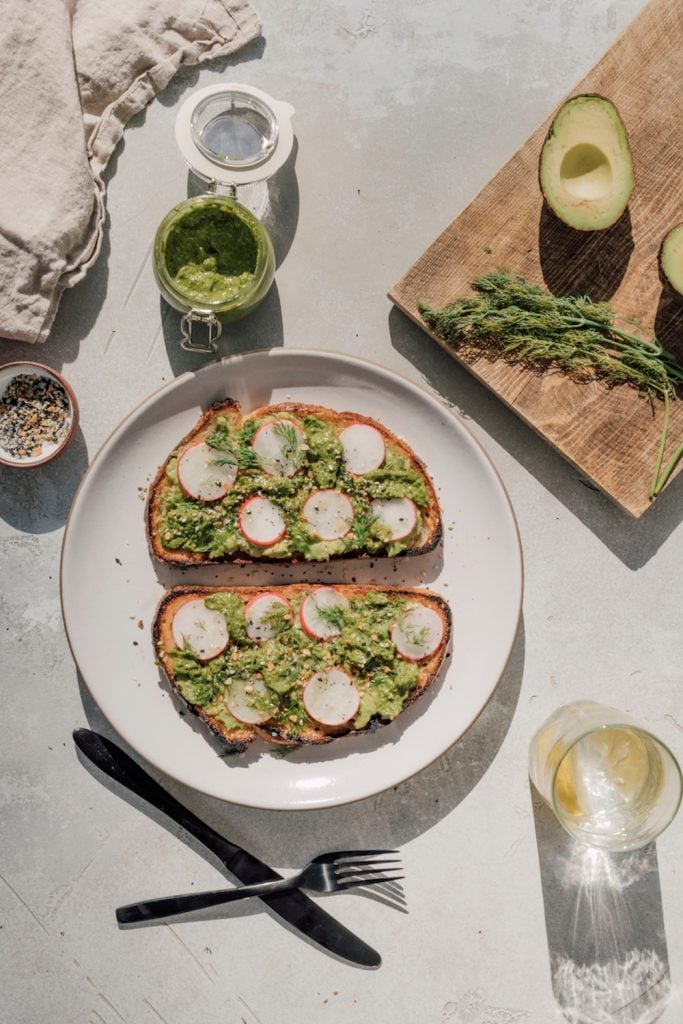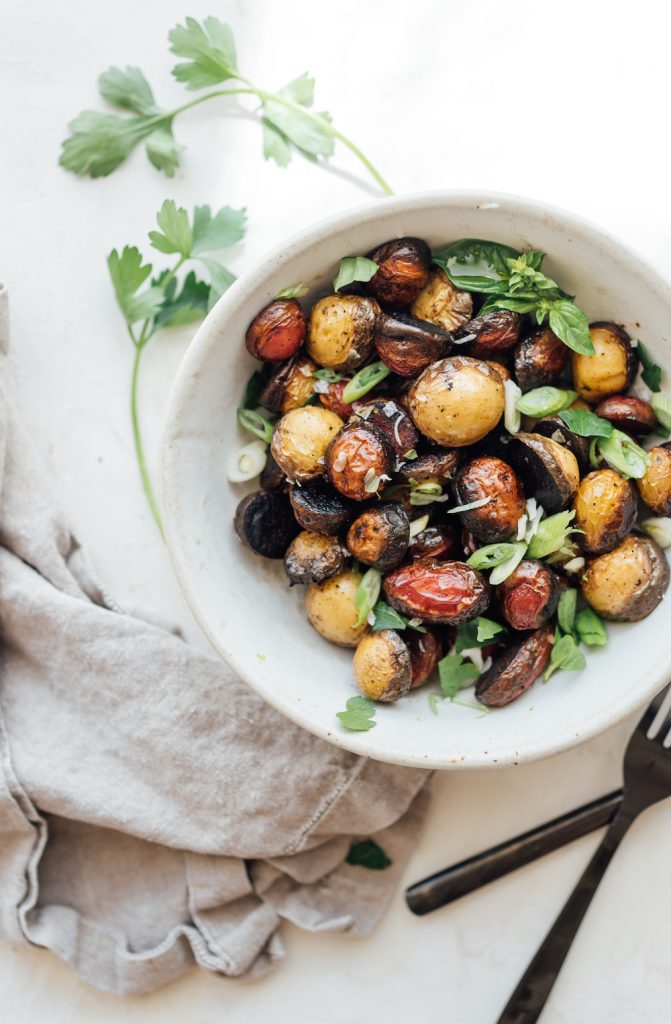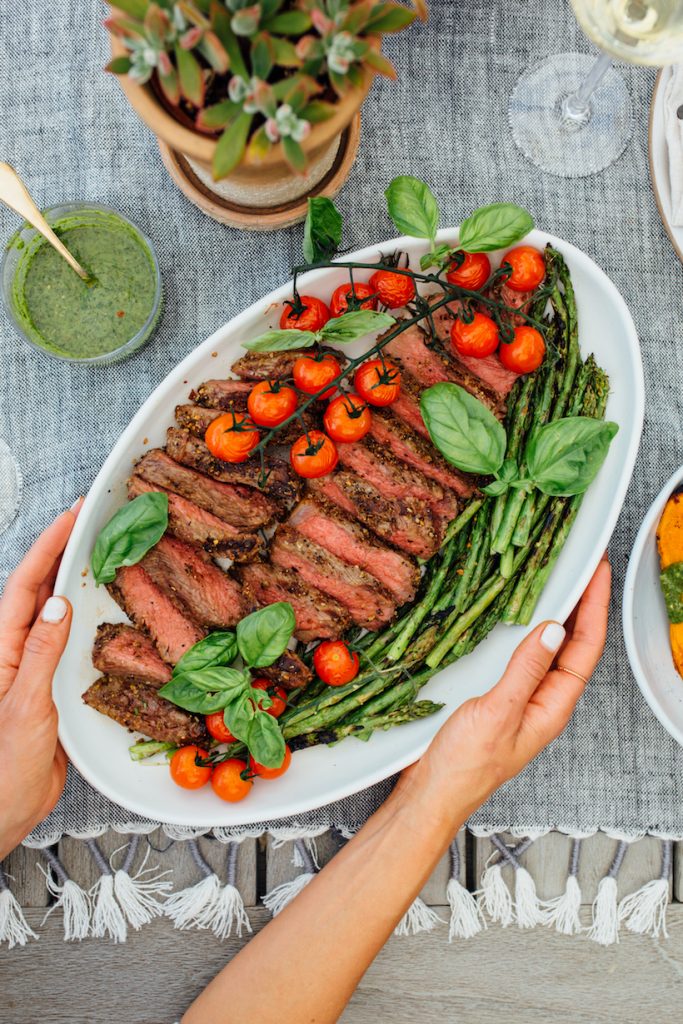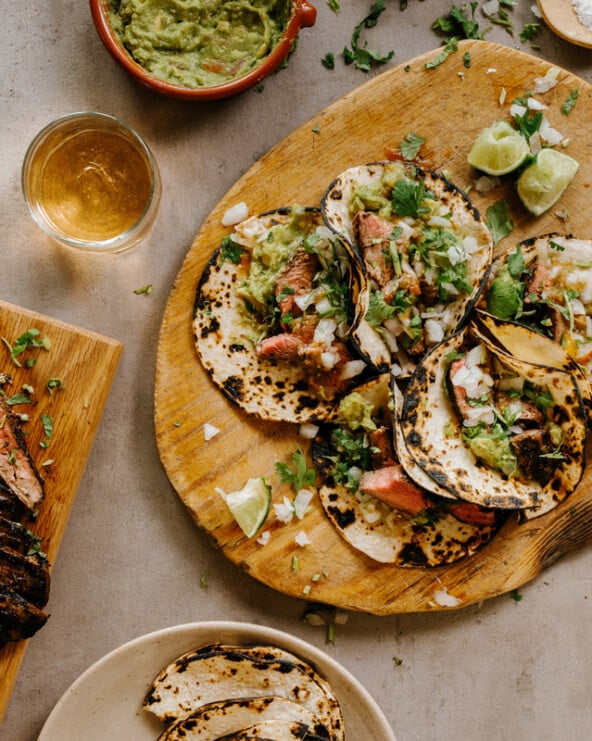This goes without saying, but the landscape of nutrition is vast. And thanks to the wild west of influencers, it’s a minefield of confusion. Is gluten the devil? Is soy a hard no? What about animal protein? Everyone has an opinion. Plus, nutrition science is a revolving door. Ultimately, the goal isn’t to live by a rigid set of food rules. Flexibility is best. The point is to nourish your cells and soul because quite frankly, both are important. With that in mind, today we’re sharing a story of culinary redemption: once-vilified foods making a comeback.
Thanks to ongoing research—and shifting perspectives—ingredients like eggs, raw milk, and tallow are taking back their spotlight. In many ways, they’re a testament to nutrition’s expansive scope. Time to get empowered.

What is the best diet?
Depends on who you ask, of course! “Eat food, not too much, mostly plants”—that’s Michael Pollan’s popular conviction. But to be more specific, the healthiest diet is a way of eating that makes you feel your best, respects your individuality, and aligns with your values. You, as a bio-individual, are at the epicenter.
If your grocery basket is filled with mostly whole foods, encourages longevity, and fits within your budget and lifestyle, you’re on the right track. Mediterranean eats aside, the best diet is one that’s balanced and enjoyable. It’s an adaptable approach that enhances the quality of your life. And don’t forget: a healthy diet also creates space for community, connection, and culture.


When It Comes to Healthy Foods, Context Matters
As someone who battled orthorexia in my early 20s, I’m acutely aware that—above all—a healthy relationship with food far outweighs nitpicking every ingredient on my plate. Nowadays, my eating habits are intention-driven: to set a positive example for my children and to live a vibrant life. Sometimes, that means a croissant is actually the healthiest option! Context matters. Therefore, determining the “healthiest foods” is entirely subjective.


What are the most nutritious ingredients?
All of that said, many foods are recognized for their nutritional value. What are our top picks? See below.
Leafy greens
Produce like spinach, kale, and Swiss chard are rich in vitamins, minerals, and fiber. They’re excellent sources of antioxidants and can support overall health, including detox pathways.
Cruciferous veggies
Think: broccoli, kale, cabbage, and cauliflower. These contain compounds called glucosinolates, which can break down into substances with potent cancer-fighting properties. As a whole, these help reduce the risk of chronic diseases.
Berries
Blueberries, strawberries, raspberries, etc. are packed with antioxidants, fiber, and essential vitamins.
Fatty fish
Salmon, mackerel, and sardines are high in omega-3 fatty acids, which are beneficial for hormone balance, heart health, brain function, and reducing inflammation.
Nuts and seeds
Almonds, walnuts, chia seeds, and flaxseeds provide healthy fats, fiber, and a variety of vitamins and minerals. They support heart and hormonal health.
Whole grains
Foods like quinoa, brown rice, and oats are rich in fiber and provide sustained energy. They can help regulate blood sugar and promote digestive health. To minimize pesticide consumption, aim for organic grains!
Legumes
Beans, lentils, and chickpeas are excellent sources of plant-based protein, fiber, and a range of vitamins and minerals. They can help manage weight and improve heart health.
Greek yogurt
This dairy product is high in vegetarian protein, probiotics, and essential nutrients. It’s great for gut health and satiation. When possible, choose organic dairy.
Turmeric
A spice with potent anti-inflammatory properties, turmeric is linked to numerous health benefits, including joint health and improved digestion.
Avocado
Avocados are a source of healthy monounsaturated fats and a variety of vitamins and minerals. They support hormone health and weight management.
Sweet potatoes
Rich in beta-carotene, fiber, and various vitamins, sweet potatoes promote healthy skin, digestion, and may reduce the risk of chronic diseases.
Eggs
Pasture-raised eggs are a convenient source of protein, essential nutrients, and healthy fats. They can help with muscle growth and satiety. Like leafy greens, they’re also beneficial during pregnancy!
Tomatoes
Tomatoes are high in antioxidants—particularly lycopene—which is associated with a reduced risk of chronic diseases (like cancer and heart disease). A highly-sprayed crop, prioritize organic when feasible.


The Low-Fat Craze
Let’s talk about the vilification of fat. After all, it’s deeply embedded in our culture. Circa the 1980s, the low-fat approach took off. And spoiler alert, it wasn’t just for patients with heart conditions. It was universally advised—an overarching ideology. Beyond shaping America’s farmland (hello, subsidized corn), it even changed the way we talk about fat. “Good” fat vs. “bad” fat ring a bell? But as time has gone on, this much is clear: a healthy, balanced diet includes fat.
Saturated vs. Unsaturated Fats
It’s not new news that unsaturated fats can actually protect against heart disease. I.e. nuts, produce (olives, avocado, etc.), and fatty fish. On the opposite end of the health spectrum? Saturated fat—found in a medium-rare steak or a slab of butter. This type of fat has always gotten a bad rap. But updated data indicates a new narrative: saturated fat isn’t as dire as we’ve been lead to believe. Take grass-fed beef, for example! Studies show that in moderation, it can supply the body with heart-healthy, omega-3 fatty acids. We need these for brain development, reducing inflammation, and more.


So, is dietary fat the villain?
No necessarily. New research suggests that dietary fat, itself, isn’t the culprit. Instead, our overconsumption of highly-processed carbs—and refined sweeteners—significantly contribute to America’s obesity epidemic. Our stressful and sedentary lifestyles contribute, too. To bring this full circle, maybe the argument against fat is more flawed than we realize.
Chat with your healthcare provider about the types (and amount) of fat that’s best for your genetics, wellness goals, health conditions, and lifestyle.
Controversial Foods Making a Comeback
From white potatoes to red meat, find out whether these polarizing eats deserve a spot in your grocery basket. Let the comeback era commence.


1. White Potatoes
If you always choose sweet potatoes or purple potatoes over white potatoes, you’re getting more bang for your nutrition buck. But that doesn’t mean white potatoes deserve the bad reputation they’ve garnered. Yes, white potatoes have a high glycemic index, which can cause rapid spikes in blood sugar (when consumed in large quantities). However, when prepared in a healthier manner, like boiling or baking, and paired with fiber-rich produce like broccoli and protein, and protein like chicken or Greek yogurt, they’re a great source of potassium and energy.
Recipe: Salt & Vinegar Pan Roasted Potatoes


2. Eggs
Eggs—the poster child of dietary controversy—have risen from the ashes of cholesterol myths. They’ve made a comeback as a beloved source of convenient protein. Previously shunned for their cholesterol content, eggs have been exonerated by modern science. We now know that they are packed with essential nutrients like protein, choline, and lutein. They can boost brain health, promote muscle growth, and keep you feeling full longer. When possible, choose pasture-raised eggs.
Recipe: Spring Rice Salad


3. Grass-Fed Beef: A Nutrient-Rich Redemptive Tale
For years, red meat, especially beef, was painted as a villain contributing to heart disease and cancer. However, grass-fed beef has emerged as a nutritional powerhouse. It’s leaner, packed with omega-3 fatty acids, and contains more antioxidants and vitamins than its grain-fed counterpart. Plus, it’s a more humane and sustainable choice, which resonates with the ethical and eco-conscious consumers of the wellness world.
Recipe: NY Strip With Chimichurri


4. Raw Milk: A Creamy Comeback
Raw milk, once banished due to concerns about bacterial contamination, is making a surprising comeback. Proponents argue that it contains beneficial enzymes and probiotics that are destroyed during pasteurization. While debates continue about its safety, the wellness community values raw milk for its potential to boost gut health, improve digestion, and enhance the immune system.
Recipe: Golden Milk


5. Tallow: The Hidden Gem of Healthy Fats
Tallow, the fat rendered from beef or lamb, has shed its unhealthy image. In the past, it was deemed as artery-clogging, but now, it’s recognized as a source of essential fatty acids and vitamins like A, D, and K2. Tallow has become a popular ingredient in skincare and a favorite cooking fat among those embracing the benefits of the ancestral diet movement.
Recipe: Bacon, Apple, And Sweet Potato Pizza


6. Bread
Bread—often portrayed as a nutritional villain—is not inherently unhealthy. In part, the reputation stems from the fact that many commercial bread products are highly processed and loaded with additives. However, when we shift our focus to whole-grain bread, we discover that bread can be a valuable part of a balanced diet. It provides essential nutrients, including fiber, vitamins, and minerals. It also gives us sustained energy! The key is to choose bread with minimal additives, fewer refined ingredients, and a high whole-grain content.
Recipe: No-Knead Focaccia
Everything in Moderation
Remember, how we eat—whether we cook it ourselves or grab fast-food takeout—matters as much as what we eat. Raw milk in your coffee, yolks in your eggs, and the occasional steak with béarnaise all have a place on your table (if they align with your health goals and values). Hopefully, these foods making a comeback never left your fridge in the first place. Bon appétit!





